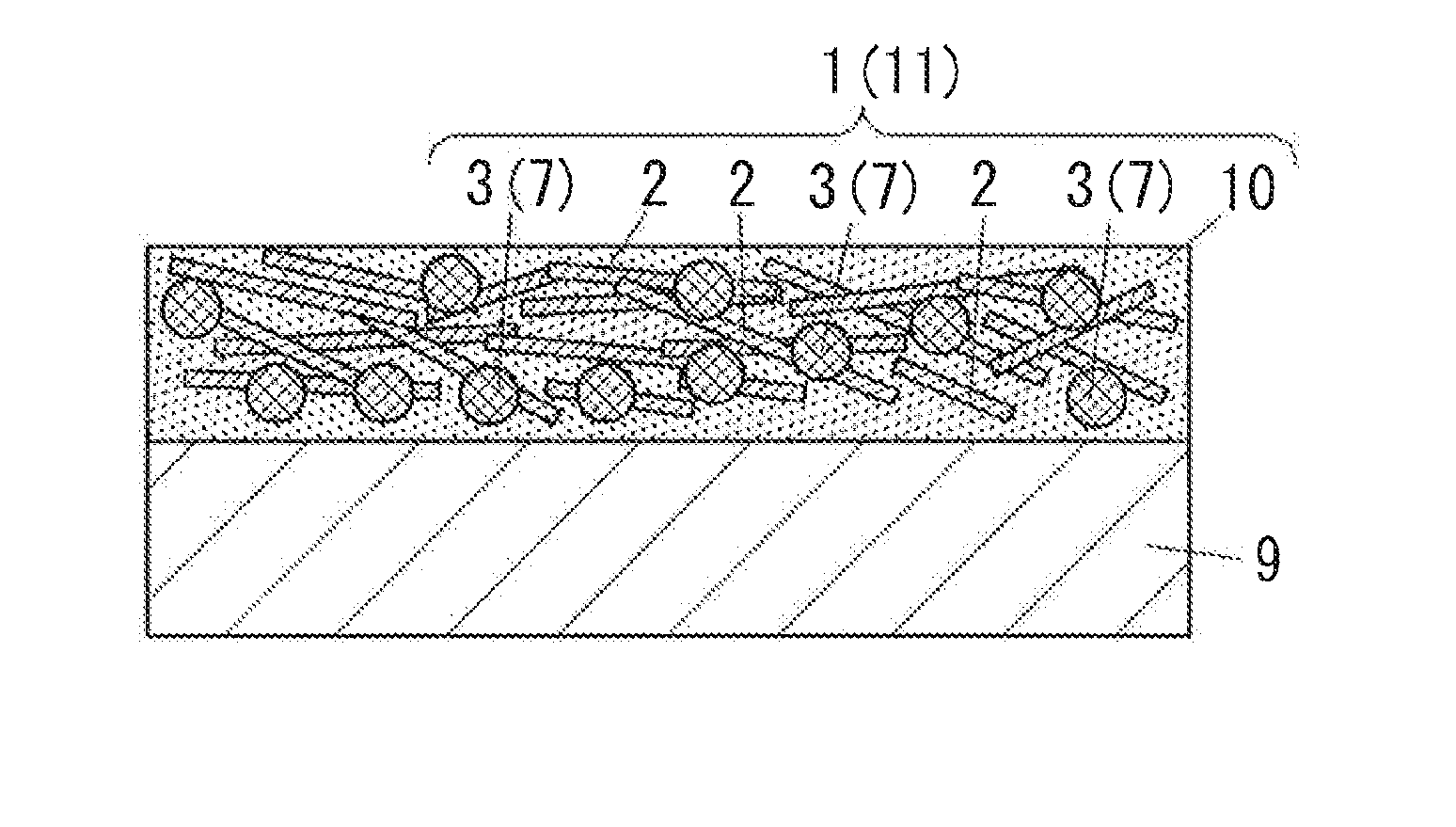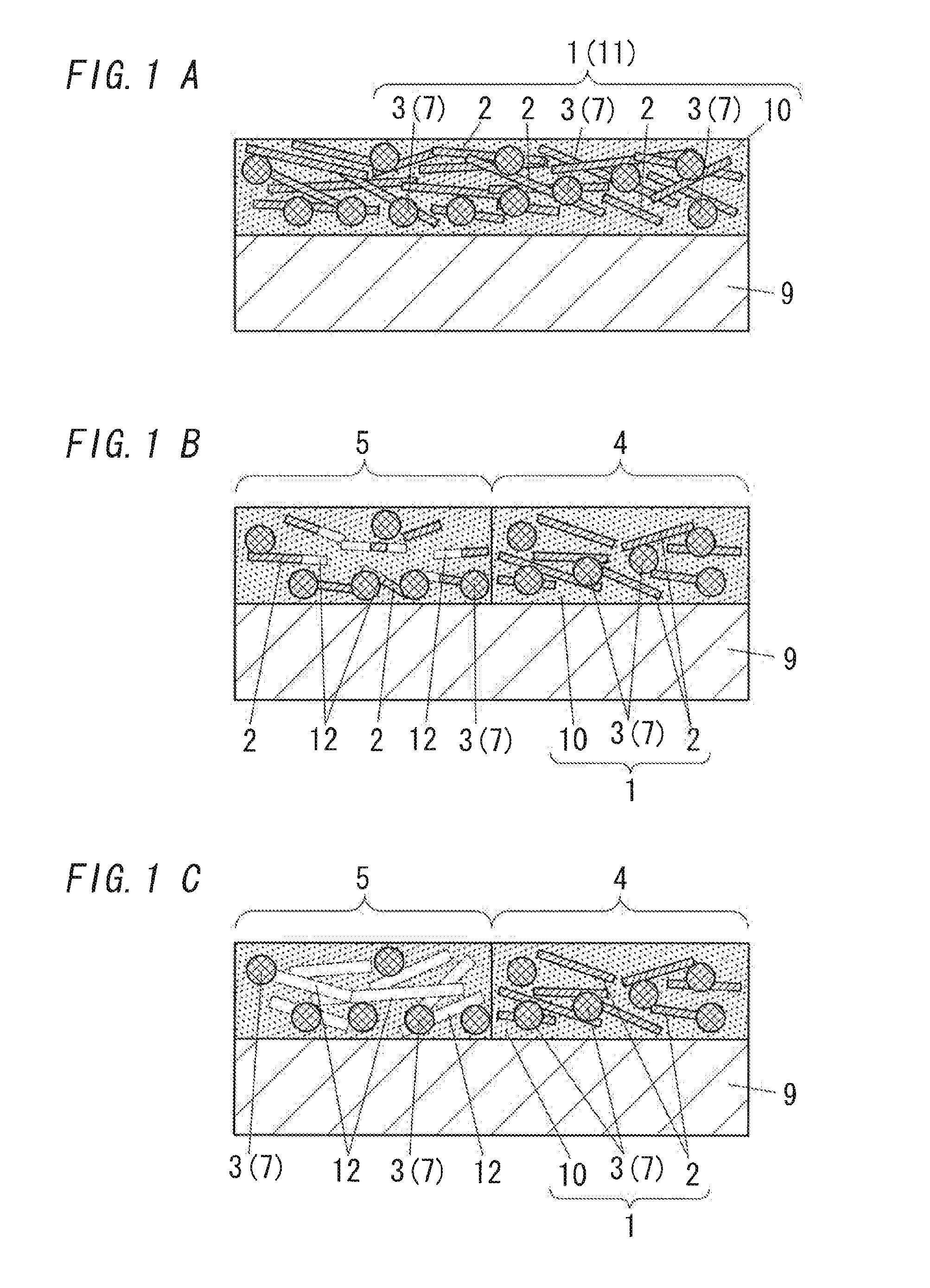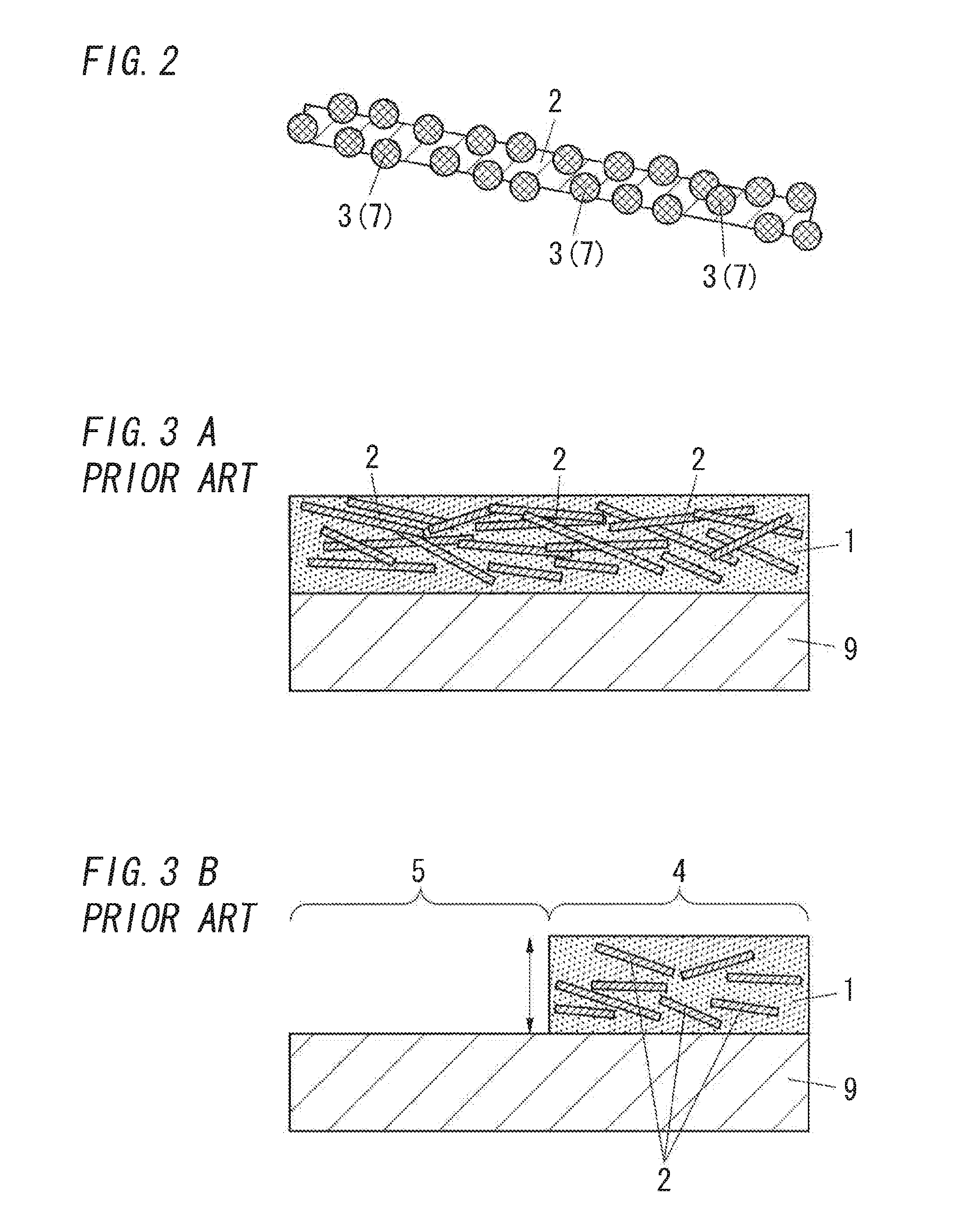Transparent conductive film, substrate carrying transparent conductive film, and production method thereof
a technology of transparent conductive film and substrate, which is applied in the direction of removing conductive materials by irradiation, instruments, nuclear engineering, etc., can solve the problems of increasing energy consumption for the preparation of insulation pattern layer, and the method described in patent document 1 is not suited for large-area conductive nanofiber sheets, etc., to reduce the aspect ratio of metal nanowires, reduce the number of contact points, and convert electrically conductive regions
- Summary
- Abstract
- Description
- Claims
- Application Information
AI Technical Summary
Benefits of technology
Problems solved by technology
Method used
Image
Examples
example 1
[0070]The transparent substrate 9 used was a non-alkali glass plate (“No. 1737”, refractive index at a wavelength of 500 nm: 1.50 to 1.53, available from Corning Inc.). The transparent conductive material A was applied on the surface of the transparent substrate by spin coating method and heated for drying and hardening under the condition of 100° C. and 5 minutes, to give a transparent conductive film having a film thickness of 100 nm. Then, to form an electrically insulating region, a light having an average energy density of 0.5 J / cm2 was emitted to the left half of the transparent conductive film by means of a UV-YAG laser. Thus, a substrate carrying the transparent conductive film having an electrically conductive region in the right half of the transparent conductive film and an electrically insulating region in the left half thereof was prepared.
example 2
[0071]A transparent conductive film having a film thickness of 100 nm was prepared in a manner similar to Example 1, except that the transparent conductive material A was replaced with the transparent conductive material B. Then, an electrically insulating region was formed similarly to Example 1, to give a substrate carrying the transparent conductive film having an electrically conductive region in the right half of the transparent conductive film and an electrically insulating region in the left half thereof.
example 3
[0072]A transparent conductive film having a film thickness of 100 nm was prepared in a manner similar to Example 1, except that the transparent conductive material A was replaced with the transparent conductive material C. Then, an electrically insulating region was formed similarly to Example 1, to give a substrate carrying the transparent conductive film having an electrically conductive region in the right half of the transparent conductive film and an electrically insulating region in the left half thereof.
PUM
 Login to View More
Login to View More Abstract
Description
Claims
Application Information
 Login to View More
Login to View More - R&D
- Intellectual Property
- Life Sciences
- Materials
- Tech Scout
- Unparalleled Data Quality
- Higher Quality Content
- 60% Fewer Hallucinations
Browse by: Latest US Patents, China's latest patents, Technical Efficacy Thesaurus, Application Domain, Technology Topic, Popular Technical Reports.
© 2025 PatSnap. All rights reserved.Legal|Privacy policy|Modern Slavery Act Transparency Statement|Sitemap|About US| Contact US: help@patsnap.com



